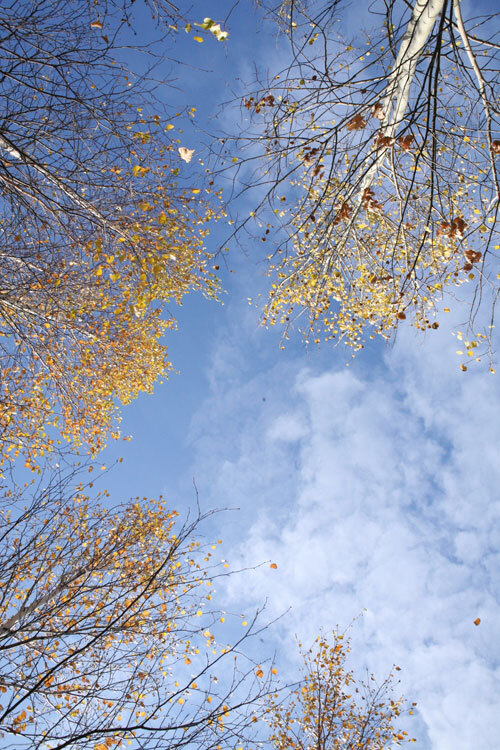


Leaves stuck on trees; tornado witnessed
Recently, a few biologists at the Alaska Bird Observatory made an observation about our autumn. It appeared that the leaves were hanging on the trees for an extra-long time. An expert confirmed this.
“I sure did notice the leaves,” said Glenn Juday, a forest ecologist at the University of Alaska Fairbanks.
For the past two decades, Juday has taken photos of a certain patch of local boreal forest between the time the first leaves fall from trees until the time it snows. This year he noticed a change from the usual pattern.
“The leaves were slow to come down, and some of them seem to be stuck now,” he said.
Juday, who works at UAF’s School of Natural Resources and Agricultural Sciences, has a few theories as to why a good number of leaves haven’t made their way to the forest floor. First, it has been a warm fall in Interior Alaska. According to his unofficial count, just two years in the last 105 registered a later first fall frost at the Fairbanks International Airport. Cold temperatures are one of a tree’s cues to drop its leaves.
Decreasing daylight also tips off a tree that it’s time to shed its solar panels. Depending on genetic traits inherited from parent trees that had adapted to past environments, trees respond to shorter amounts of daylight by breaking down pigments in leaves (which makes a birch leaf turn from green to gold). A tree has to execute one last act of growth for leaves to fall; an abscission layer (abscission means “the act of cutting off”) forms at the base of a leaf stem, and that layer dissolves the calcium glue that holds leaves on, Juday said.
Bitter cold air stops that process. Trees with genes that need less nighttime to inspire them to drop their leaves got rid of them before the cold hit. The trees with a gambler’s genes, those attempting to grow a bit longer, lagged a bit, perhaps due to the longer period before freezing temperatures hit. When cold temperatures arrived, the trees were caught with their leaves on, and remain that way because temperatures have snuffed the growth that is needed for leaves to drop.
“So, what happens now?” Juday said. “The leaf tissues will just shatter in the cold through the winter, although some of the hardiest leaves may be able to muster just enough growth to push the leaf off.”
* * *
After reading a column about Alaska tornadoes, Arndt von Hippel of Anchorage e-mailed one of the better descriptions I’ve read of the rare Alaska occurrence.
“In the late 1970s, Paul Sayer and I were returning in separate airplanes—his Maule and my Citabria—from a supply run to his gold mine (which was located on a creek well past Takotna). We were approaching the McGrath entrance of Rainy Pass—in the lee of its well-known jutting terrain features—when I spotted ‘twisters’ ahead. The largest of these three small twisters reached from the scattered cloud base to the ground when we first spotted it.
“As we watched, and flew onwards toward Rainy Pass, that largest twister first crossed a burned area, lifting a black segment of ash up toward the ordinary looking cloud, then over the river, lifting sand and then water segments toward the cloud, and then over a scrub area which gave an additional different color to the next upward-moving segment. I do not recall the day being particularly windy nor do I recall any thunderstorm as we passed into the McGrath-end entrance of Rainy Pass with those ‘tornadoes’ moving off well to our left, miles outside of the pass. I think we ruminated about the possibility of fish falling from the sky.”







